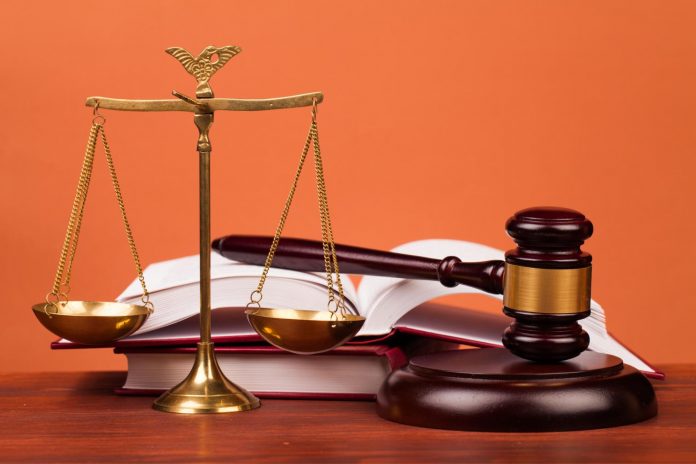This article is written by Pari Khurana pursuing BA LLB from Ansal University.
Table of Contents
Introduction
Equity itself is derived from a Latin word which means Justice and egalitarianism. It is a system of law which emanated in the English chancery and encompasses a formal body of indispensable and procedural rules and doctrine, that appendage or override common and statutory law. The law relating to equity is largely based on precedent. Since, it is not viable on the part of the state to contrivance a comprehensive code of law in order to supervise every eventuality. Wherein, Law and Equity goes side by side. Equity is consequential in the legal world because men and laws are fallible. A Court of Equity, Chancery Equity that is legally approved to apply the principle of Equity, as opposed to the law, to cases brought before it. The principles and rules emerging from the exercise of residuary powers, which forms the living source of the law of the state. Different jurists have their different opinion related to the meaning of equity. The system includes some portion of natural justice which is judiciary enforceable.
Origin of Equity in India
In India, Equity has its origin from the relevant ancient Hindu period, when some of the well-known legal experts defined the old law and set out the new rules for a better edible solution in case of any conflict arising between rules of different laws. Hindu law has never been undeviating and has accordingly introduced equitable principles to meet the requirements of the time. The smritis were the oldest attempt for the compilation of law. In which smriti karas (the author of Smriti) have actually conceded the principle of law. It was stated that decisions should not be exclusively based on scriptures, there should be principles based on reasons. These reasons-based principles are qualified with the term equity.
Equity under Roman Law
The Praetor was the famous judicial magistrate of a Roman law. The exercising of power at that time was by the means of formulae and written statements. Everything was bounded or surrounded all around the statements. Gradually, the Praetor started following another mode of jurisdiction, which is termed as an extraordinary jurisdiction. After a phase, the cases and areas where the Praetor could interfere become more common and through this only the principle of morality and equity was introduced in the Roman Law.
Equity under Indian Legal System
As a branch of the legal system Equity refers to the essence or rules arising from the administration process of justice specifically in those cases where the areas are not adequately covered by statute. Equity besides supplements the law with quintessence of liberty and goodwill. In India, as a matter of administration, there was never a well-developed Supreme court as most part of the law for the application of the court is certified. There the court acts according to the principle of equity, justice. The Mohammedan law also partly lays down its origin from the principle of equity. Equity and adequate ethics have also been expressly laid down with laws. The English laws also contributed to the development of Equity in the jurisdiction of India. In Indian, the common law doctrine of equity had been followed even after the independence. The principle of law has been stated in various laws such as:
➢ The Specific Relief Act, 1877
➢ The Indian Trusts Act, 1882
➢ The Indian Succession Act,1925
➢ The Transfer of Property Act,1882
General Principles of Equity
The methods relating to the unbiased jurisdiction are basically derived from the crucial truth of righteousness. The importance of the maxims not to be exaggerated as it is really a far more from immutable principles. There are some of the principles which have their own ultimate source of equity as these sources are also termed to be as a maxim. These are the general principles which broadened under the term equity, some of them are recapitulated below:
- He who seeks equity must do equity:
➢ This maxim clearly shows a directive on the applicant of equity. Here the maxim mainly put its main source on the rectitude of the court. Case Law- Chappell v. Times Newspaper Ltd. Facts- Here the injunction was not granted to the employees who were mainly wishing to stop their employer releasing the contract in the form industrial dispute.
- Equity follows the Law:
➢ This maxim means that the equity does not violate the law. It follows the appropriate form of law.
- Equity will not be a wrong to be with or without a remedy:
➢ This maxim states that it is developed as common law which basically doesn’t lay down any new remedies but it has only nominal damages. Case Law- Patterson v. Murphy
- Equality is equity:
➢ This maxim means that when two or more parties have their common interest but due to some specific reason their interest has not been qualified, then the equity as a source may divide their interest equally. Case Law- Flight v. Bolland Facts- In this case minors are not granted with the specific performance of tasks against the adults, as minors are not eligible for a contract to be enforceable.

Some Important cases under the Principle of Equity
- Namdeo Lokman Lodhi v. Narmadabai And Other 1953 AIR 228
- M. Nagarajan v. V.M. Nagammal
- Rattan Lal v. Vardesh Chander And Ors. 1965 AIR 588
- Ganeshi Lal v. Jyoti Pershad 1953, AIR
Equitable Remedies
There are some remedies available by the court of law mainly for the plaintiff just to compensate for the damages he has suffered from. Some of them are:
- Injunctions: It is a type of remedy in which the court provides the certain law and order which the parties are pressured to do or abstain from doing a certain specific task. Case Law- Mohd. Afzal Shah v. Ghulam Ahmad Shah and Ors.
- Specific performance: In this type of remedy, the court passes a statement to the parties in order to fulfil certain tasks which are interlinked or already a part of a contract. Case Law- Executive Committee of Vaish v. Lakshmi Narain and Ors.
- Recession: This remedy alternatively takes back the parties to their normal position as they were in before entering the contract. Case Law- Bedi and Bedi Ltd. Bangalore v. The Commissioner of Central.
- Rectification: In this type of remedy court orders to rectify or make certain changes in the written document so that to reflect what is actually said on the first page. Case Law- M/s Harinagar Sugar mills Ltd. V. Shyam Sunder Jhunjhunwala.
Common-Law Doctrine of Equity
In India, the common law doctrine of equity has been followed after independence. “The Specific Relief Act 1963” was successfully passed by the Parliament rescinding the earlier Act. There was certain authorization which was codified in the 1963 Act such as Recovery of possession of immovable property, Declaratory Decrees etc. With the certain mode of the nature of equitable reliefs earlier was recast to make them into statutory rights. Under Section 150 of Code of Civil Procedures the court continues to exercise their inherent powers.
Conclusion
Equity plays a crucial role in the justice delivery system. In the world of digitalization, almost every organism is now familiar with the technological part, wherein the computers are the best replacement for humans nowadays mainly from the position of judge, ‘feed the fact and laws into it and getting a judgement with all accuracy’. The importance of equity was greater emphasis than the common law system. During the centuries it gained importance and became an integral part of an Indian legal system too. In India it developed through various statues which have gained momentum with the various acts which have been passed throughout. The legality of equity has gained its own significance in the recent years. There are certain acts which work through the principle of equity nowadays in India.
LawSikho has created a telegram group for exchanging legal knowledge, referrals and various opportunities. You can click on this link and join:
 Serato DJ Crack 2025Serato DJ PRO Crack
Serato DJ Crack 2025Serato DJ PRO Crack










 Allow notifications
Allow notifications



